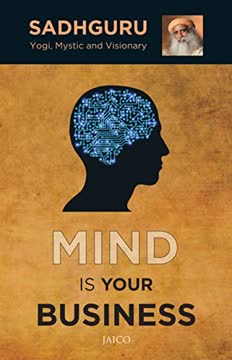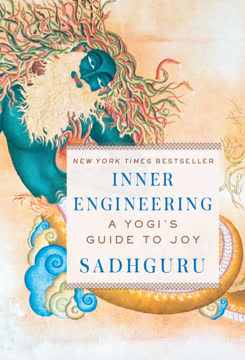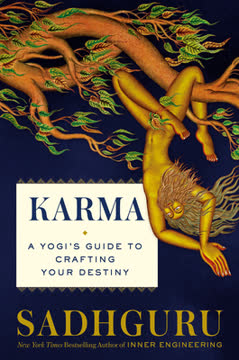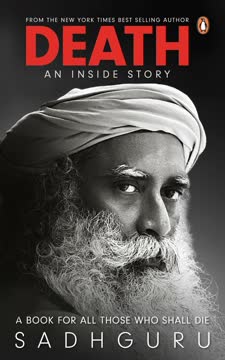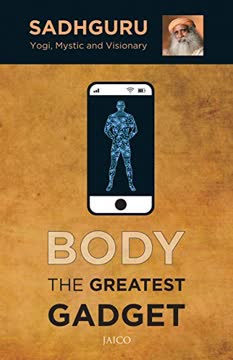Key Takeaways
1. Your Mind is a Messy Circus Due to Identification
Only if you are out of the circus of your mind, you will be hundred percent free of madness.
Mind's dual nature. The mind is a dynamic entity, capable of taking you to great heights or plunging you into the depths of hell. Like a circus, it can be a highly coordinated activity (brain function) or a chaotic mess (most people's experience). This mess arises because the mind becomes deeply identified with countless things.
Identification distorts perception. Once your intellect identifies with something – your body, family, qualifications, beliefs, etc. – it gets chained. This distorts your perception of reality, permeating every aspect of your life and creating a complex mess. It's like a knife that becomes useless when the residue of what it cuts sticks to it.
Mental diarrhea. This deep identification leads to a continuous, unstoppable stream of thoughts, like "mental diarrhea." Attempts to stop it through external means like drinks or drugs only multiply the mess. The only way out is to become involved with life without getting entangled, which requires dis-identification.
2. Suffering is Manufactured in Your Own Mind
Every kind of misery that human beings are going through is manufactured in their minds.
Mind as torture device. The mind, which should be a miraculous instrument, has become a misery-manufacturing machine for most people. Unable to bear this mental torture, people invent various deviations and perversions for temporary relief, but these only worsen the mess. Your mind, meant to be a ladder to the divine, becomes a stairway to hell due to identification.
Unwillingness causes suffering. Whether your mind is a misery or a miracle depends on your willingness towards life. If you are selectively involved based on identification, you become unwilling to the full process of life. This unwillingness scales down your aliveness and makes life a suffering, like being "raped by life" instead of experiencing a "love affair."
Psychological vs. life process. Your psychological process (thoughts, emotions) has become far more important than your life process (simply being alive). This endless chatter and recycling of gathered nonsense prevents you from experiencing the immensity of being alive. The most beautiful moments are when you are not thinking, but just living.
3. Liberation Comes from Dis-identification, Not Control
Once you liberate your mind from being identified with anything, then mind is a miracle; mind is a spectacular circus, not a mess.
Mind needs liberation. People often talk about controlling the mind, but the mind doesn't need control; it needs liberation. Trying to control it is difficult because it only understands addition and multiplication – telling it not to think about something makes you think about it constantly. The desire for "no-mind" arises only because the mind has become a torture.
Morality creates identification. Imposing ideas of right and wrong, good and bad, creates strong points of identity. You identify with the "good" and have aversion to the "bad." This attraction and aversion are the basis of identification, and whatever you are averse to dominates your mind.
Involvement without entanglement. Detachment is often propagated out of fear of entanglement, but detachment avoids life. Involvement is necessary to experience life deeply. Entanglement happens not from involvement, but from discriminatory involvement rooted in identification ("This is my wife, my child"). If your involvement is indiscriminate, beyond identification, it brings absolute joy and enhances life tremendously.
4. The Body is the Greatest Gadget, a Tremendous Instrument
This body can be just a mass of flesh... or it can be made into a tremendous instrument – an instrument which can bring the Divine into your direct experience.
Beyond flesh and bone. Most people experience the body only as flesh and bone, a source of pain or pleasure. However, the yogic sciences see it as an intricately crafted system, constantly connected to the cosmos. It is the most sophisticated gadget on the planet, capable of perceiving the entire existence.
Limited utilization. Like using only 7% of a basic phone's capabilities, most humans use well below 1% of their system's potential. Instead of using the body to go beyond survival instincts, people merely raise their standards of survival (from a meal to a Mercedes). This is an unintelligent use of the human mechanism.
Instrument of perception. The body can be made into an instrument that becomes the very axis of the universe. By expanding your sensory body beyond the physical form, you can experience everything as a part of yourself. This is the essence of yoga – union, where the individual and universal become one in your experience.
5. Your Energy Body and Chakras Determine Wellbeing
If your energy body is in proper balance and full flow, disease cannot exist in you physiologically or psychologically.
Five sheaths of body. Yoga views a human as five layers: physical body (annamaya kosha), mental body (manomaya kosha), energy body (pranamaya kosha), etheric body (vignanamaya kosha), and bliss body (anandamaya kosha). The first three are physical, becoming subtler.
Pranamaya kosha is key. The energy body is fundamental; how it reverberates determines the state of the physical and mental bodies. Mastery over prana brings not just health but also mastery over external situations, making life effortless. Yogic practices primarily work on this level.
Chakras as energy junctions. The 114 chakras (junctions of nadis) are triangular energy points. Seven are major. For most, only three are active, related to basic survival and physical enjoyment. Activating more chakras reduces the sense of body. Chakras also have spiritual dimensions, allowing transformation beyond physical limitations.
6. The Five Elements are the Basis of Creation and Your Body
The five elements of earth, water, fire, air and space, are the basis of this body, the basis of this planet, and the basis of the whole creation.
Cosmic juggling act. Creation is a complex geometry, a juggling of just five ingredients: earth, water, fire, air, and space. Depending on how these elements play together, they can manifest as mud, food, human, or Divine. This apparent complexity, when understood, reveals itself as a cosmic joke.
Bhuta Shuddhi for mastery. The most basic yogic practice is Bhuta Shuddhi (cleansing the elements). Sufficient cleansing leads to Bhuta Siddhi (mastery over the elements). This transforms life from an accidental, compulsive reaction to a conscious process, making pleasantness and bliss natural.
Elemental alignment. Keeping the five elements properly organized within yourself handles everything: health, wellbeing, perception, knowing, and enlightenment. Temples were built for specific elemental sadhanas. Being in touch with the earth, like walking barefoot or mud baths, helps reorganize the system and reminds the body of its nature and mortality.
7. Yogic Practices Align Your System for Higher Perception
The whole science of yoga is to understand the geometry of your existence...
Body geometry matters. The way you hold your body affects your perception. If the geometry of your body aligns with cosmic geometry, it becomes an antenna to receive and download the whole cosmos. Rigidity or compulsion blocks this reception; ease allows it.
Asanas are not just exercise. Yogasanas are postures that lead to higher dimensions or perceptions. They are subtle processes to manipulate energy, not just physical exercises. Hata yoga balances the masculine ("Ha," sun) and feminine ("Ta," moon) energies (Ida and Pingala) within, a necessary step for scaling consciousness.
Spine as axis. The human spine (Merudanda) is referred to as the axis of the Universe because your experiential dimension is rooted there. The 72,000 nadis spring from Ida, Pingala, and Sushumna (the central, attribute-less channel). Life truly begins when energies enter Sushumna, leading to Vairagya (transparency) and inner balance undisturbed by external situations.
8. Awareness and Perception Trump Thought and Logic
If you turn inward for just one moment, everything that is worth knowing in the existence can be known.
Thinking vs. living. Most people spend 90% of their time thinking about life, not living it. Thinking is just recycling gathered nonsense and cannot be bigger than life itself. The most beautiful moments are when you are not thinking, but just living and experiencing.
Logic's limitations. Logic is useful for handling material realities, but applying it too much to life squeezes the life out. Logically, life has no meaning; experientially, it is full of reason to live. Logic divides; truth unifies. Even modern neurology suggests perception is not a direct reflection of reality but a brain-created image based on limited information.
Intelligence beyond logic. To know life in its immensity, you need something beyond thought, logic, or intellect. This is intelligence beyond logic, referred to as the Creator. If you operate only within intellect's framework, you only know the physical. Turning inward allows you to perceive the whole cosmos within.
9. True Devotion is Dissolving the Self, Not a Transaction
A devotee has no agenda of his own. His only objective is to dissolve into his object of devotion.
Devotion vs. deal. Devotion (bhakti) is the quickest way to the Ultimate, but for most people today, it's a transaction ("Give me this, save me"). This is not true devotion. True devotion means having no personal agenda, only the desire to merge or dissolve into the object of devotion.
Intellect hinders devotion. With the modern intellect's prominence, true devotion is difficult. The intellect is unwilling to bend totally unless overwhelmed by a deep experience. People may feel devout in moments of emotional upsurge, but their commitment to body and intellect prevents total surrender.
Reverence as a step. Since devotion as an ultimate vehicle is often unavailable, developing reverence for life around you is a better starting point. When the experience of life or someone's presence overwhelms you, and your mind and feelings become less important, then devotion becomes a possibility – not as a vulgar act, but as a way of life.
10. Chronic Disease Stems from Energy Imbalance
Disease and ailments happen fundamentally because somewhere your energy body is not functioning properly.
Infectious vs. chronic. Diseases fall into two categories: infectious (contracted externally, handled by medicine) and chronic (created by the body itself). Chronic ailments occur despite the body's deep longing for wellbeing, indicating a fundamental issue beyond external factors.
Mind-body connection. Psychosomatic diseases show the mind's impact; changing attitude (dropping anger, hatred) can make diseases disappear. The mind's state hampers energy function. If energy malfunctions, disease manifests, often in areas inherently weak due to inheritance or karmic tendencies.
Karma as software. Karma is like software, impressions creating tendencies (vasanas) that influence life and can manifest as disease if energy flow is impaired. External influences (people, situations, spaces) can also impair energy. Yogic kriyas can handle these impairments by reorganizing energies. Healing attempts often just remove symptoms (indicators), leaving the root problem to manifest more drastically later.
11. Transcending the Mind Transcends Karmic Bondage
If you transcend the mind, you transcend the karmic bondage also, completely.
Mind is the past. As long as you function through the mind, you are ruled by the past, as the mind is an accumulation of old data. This leads to repeating historical patterns and personal life cycles. The past exists only through the mind's activity.
Mind is karma. Mind is essentially karma – the accumulated impressions. Transcending the mind is transcending karmic bondage in one stroke. Trying to work out karmas one by one is endless, as you create new ones in the process. The key is to stop creating new stock.
Illusion of the non-existent. Karmas are non-existent past impressions, a trap of the mind. Dealing with them as reality is an illusion. Transcending the mind dissolves this illusion. The separation of "you and me," time and space, is a bondage of the mind. Dropping the mind drops these limitations; everything becomes here and now.
12. Freedom Becomes Suffering When You Are Unconscious
Human beings are not suffering their bondage, they are suffering their freedom, and that is the biggest tragedy.
Discretionary intellect. Humans suffer more than animals because of their discretionary intellect. Most human suffering is mental and self-created. You can choose to be joyful or miserable at any moment; the mind is fluid and can take any shape. Animals have fixed lives and are not confused; humans are possibilities, leading to confusion.
Freedom's paradox. Nature gave humans freedom to choose what they become, unlike other creatures whose lives are fixed. This freedom is the source of pain and struggle. It is a problem only when you are unaware.
Awareness is benediction. If you are aware, freedom becomes your benediction, allowing you to flower into a larger dimension. Meditation makes you conscious, so you don't suffer freedom but use it. The choice to make life heaven or hell is yours. As a yogi said, "I don't care what's on God's mind. I know what's on my mind. I am going to heaven and that's all."
Last updated:
FAQ
1. What is "Mind is your Business and Body the Greatest Gadget" by Sadhguru about?
- Dual Focus: The book is a compilation of two volumes: "Mind is your Business," which explores the nature, pitfalls, and possibilities of the human mind, and "Body the Greatest Gadget," which delves into the yogic understanding of the body as a sophisticated instrument for experiencing life and the cosmos.
- Practical Spirituality: Sadhguru offers practical wisdom and yogic tools to help readers gain mastery over their mind and body, aiming for inner peace, clarity, and wellbeing.
- Integration of Science and Spirituality: The book bridges modern scientific insights with ancient yogic knowledge, making complex spiritual concepts accessible and relevant to contemporary readers.
- Transformative Approach: Through discourses, stories, and Q&A, Sadhguru guides readers toward self-realization, emphasizing the importance of dis-identification from mind and body for true liberation.
2. Why should I read "Mind is your Business and Body the Greatest Gadget" by Sadhguru?
- Clarity on Mind and Body: The book demystifies the workings of the mind and body, offering clear explanations and actionable steps to overcome confusion, stress, and suffering.
- Tools for Wellbeing: Readers gain access to yogic practices like Isha Kriya and insights on diet, posture, and energy management, which can enhance physical and mental health.
- Universal Relevance: Whether you are a skeptic, seeker, or someone facing daily life challenges, the book addresses a wide range of questions and provides guidance for all.
- Inspiration for Transformation: Sadhguru’s wit, stories, and practical advice inspire readers to take charge of their inner world and unlock their highest potential.
3. What are the key takeaways from "Mind is your Business and Body the Greatest Gadget"?
- Mind as a Tool: The mind is not to be controlled or suppressed but liberated and used as a tool for wellbeing and self-realization.
- Dis-identification: Suffering arises from identifying with thoughts, emotions, and the body; creating distance from these leads to clarity and joy.
- Body as a Gadget: The human body is the most sophisticated instrument, capable of perceiving the cosmos when properly aligned and cared for.
- Yogic Practices: Simple practices like Isha Kriya, proper diet, and asanas can transform one’s experience of life, health, and consciousness.
- Five Elements: Mastery over the five elements (earth, water, fire, air, space) is central to health, perception, and spiritual growth.
4. How does Sadhguru define the mind in "Mind is your Business"?
- Circus Analogy: Sadhguru likens the mind to a circus—highly coordinated yet appearing chaotic, capable of both great heights and deep misery.
- Accumulation of Impressions: The mind is an accumulation of impressions, memories, and information gathered through the senses, not a fixed entity.
- Not the Brain: He distinguishes between the brain (a physical organ) and the mind (an activity or process that exists only in its activity).
- Liberation, Not Control: The mind should be liberated from identifications, not controlled or suppressed, to function as a miraculous instrument.
5. What is Sadhguru’s approach to handling thoughts and emotions in "Mind is your Business"?
- No Pure or Dirty Thoughts: Thoughts are neither pure nor impure; they are simply permutations of accumulated impressions.
- Dis-identification: The key is not to identify with thoughts or emotions, but to observe them as passing phenomena.
- Stupidity as Wisdom: Recognizing one’s own ignorance or “stupidity” helps reduce attachment to thoughts and opens the door to true intelligence.
- Selective Attention: Only consciously generated thoughts should be given attention; random, compulsive thoughts should be ignored.
6. What is the role of meditation and Isha Kriya in "Mind is your Business"?
- Creating Distance: Meditation, especially Isha Kriya, is designed to create a space between you and your mind/body, leading to clarity and peace.
- Simple Practice: Isha Kriya is a 12-minute practice accessible to anyone, involving breath, awareness, and sound to facilitate inner separation.
- End of Suffering: Regular meditation helps end suffering by breaking identification with the mind and body, allowing one to experience life as it is.
- Foundation for Growth: Meditation is presented as a foundational tool for both immediate wellbeing and ultimate spiritual realization.
7. How does Sadhguru describe the body in "Body the Greatest Gadget"?
- Supreme Instrument: The body is seen as the most sophisticated gadget, capable of perceiving the entire cosmos if properly aligned.
- Five Sheaths: Yogic physiology describes the body as having five layers (food, mental, energy, etheric, and bliss bodies), each with distinct roles.
- Not Just Flesh and Bone: Beyond its biological functions, the body is a dynamic, energetic system deeply connected to the universe.
- Potential for Mastery: With awareness and yogic practices, the body can be transformed from a source of limitation to a ladder to the divine.
8. What are the five elements (pancha bhutas) and their significance in "Body the Greatest Gadget"?
- Foundational Elements: Earth, water, fire, air, and space are the building blocks of the body, planet, and all creation.
- Elemental Balance: Health, wellbeing, perception, and enlightenment depend on keeping these five elements in balance within oneself.
- Bhuta Shuddhi: Yogic practices like bhuta shuddhi (elemental cleansing) are designed to purify and master these elements.
- Path to Liberation: Mastery over the elements (bhuta siddhi) leads to conscious living, effortless health, and spiritual freedom.
9. How does Sadhguru explain the relationship between mind, body, and energy in these books?
- Interconnected Layers: The physical body, mental body, and energy body are interdependent; imbalances in one affect the others.
- Energy as Foundation: The energy body (pranamaya kosha) underlies and powers both mind and body; its balance is crucial for health and transformation.
- Alignment for Access: Aligning these layers through yoga allows access to deeper dimensions of experience and consciousness.
- Disease and Healing: Many chronic ailments arise from energy imbalances, and can be addressed through yogic practices rather than just physical interventions.
10. What is the yogic perspective on disease and healing in "Body the Greatest Gadget"?
- Two Types of Disease: Sadhguru distinguishes between infectious diseases (external) and chronic ailments (internal, often psychosomatic).
- Energy Malfunction: Chronic diseases are often the result of malfunctioning energy systems, influenced by mind, karma, and external factors.
- Self-Healing: With proper sadhana (spiritual practice), attitude, and energy alignment, many diseases can be prevented or healed.
- Caution on Healing Powers: Sadhguru warns against indiscriminate energy healing, as it can entangle both healer and recipient karmically.
11. What are chakras, nadis, and their roles according to "Body the Greatest Gadget"?
- Energy Centers: Chakras are junction points of energy channels (nadis) in the body, with seven major chakras playing key roles in physical and spiritual life.
- Ida, Pingala, Sushumna: The three main nadis represent different qualities—masculine (Pingala), feminine (Ida), and the central channel (Sushumna) for spiritual ascent.
- Chakra Activation: Most people operate with only a few chakras active; yogic practices can awaken higher centers, leading to expanded perception and ecstasy.
- Spiritual Evolution: The journey from the base chakra (Muladhara) to the crown (Sahasrar) symbolizes the path from survival to liberation.
12. What are the best quotes from "Mind is your Business and Body the Greatest Gadget" and what do they mean?
- “Your mind need not be controlled; your mind needs to be liberated.” – True freedom comes from dis-identifying with the mind, not suppressing it.
- “A human is not a being; he is a becoming.” – Human life is a process of constant evolution and possibility, not a fixed state.
- “If you transcend the mind, you transcend the karmic bondage also, completely.” – Rising above the mind frees one from the limitations of past impressions and karma.
- “The five elements… are the basis of this body, the basis of this planet, and the basis of the whole creation.” – Mastery over the elements is key to health, wellbeing, and spiritual growth.
- “If you want to know life in its immensity, you need something more than your thoughts, your logic, or your intellect.” – Experiencing life fully requires going beyond the limitations of the logical mind into direct perception and awareness.
Review Summary
Mind is your Business and Body the Greatest Gadget receives generally positive reviews, with readers praising Sadhguru's insights on mind control and self-liberation. Many find the book's perspective on detachment from thoughts and experiences helpful for personal growth. Readers appreciate the logical explanations and practical advice offered. Some note that the content can be challenging to grasp fully, especially for those new to spiritual concepts. The book's format, which includes questions and answers, is seen as engaging. While some readers express skepticism, many find value in Sadhguru's teachings on mindfulness and meditation.
Similar Books
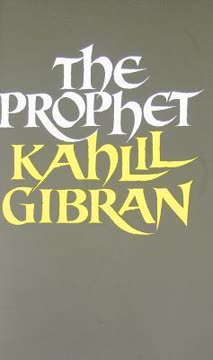
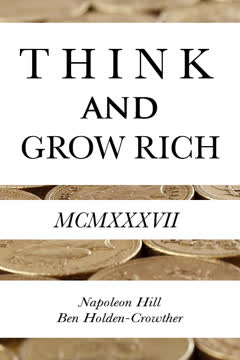
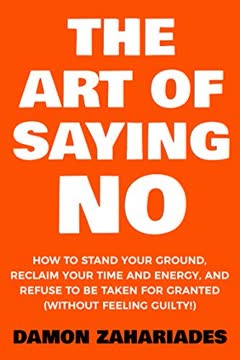
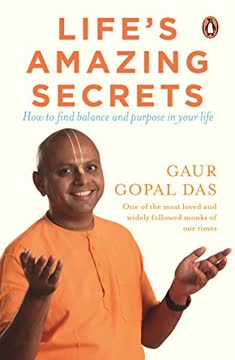
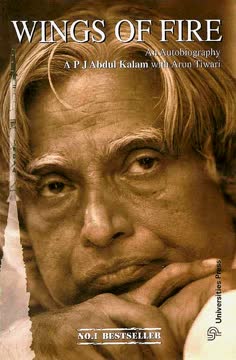
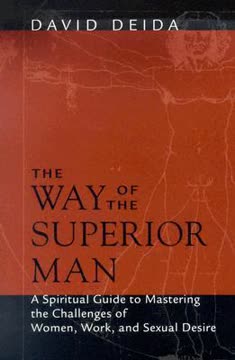
Download PDF
Download EPUB
.epub digital book format is ideal for reading ebooks on phones, tablets, and e-readers.
